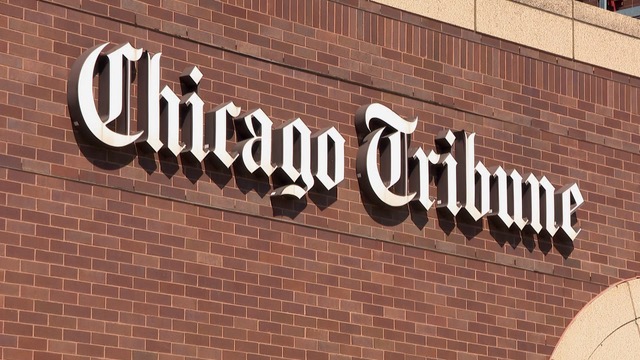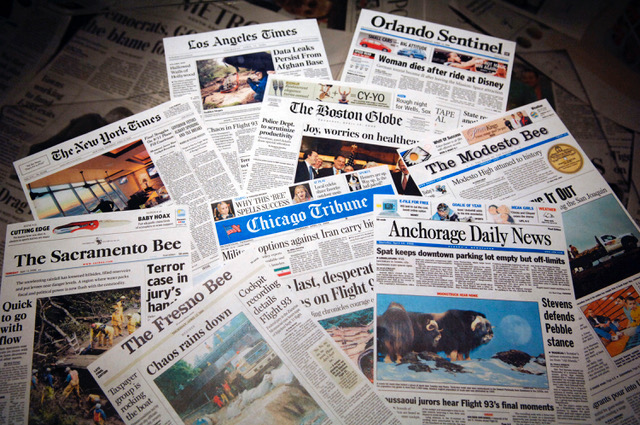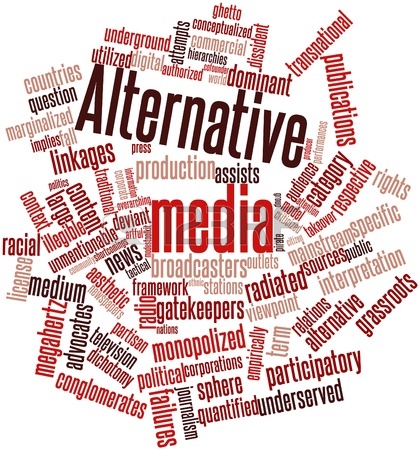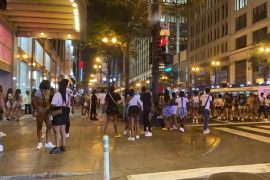That is the question. The Chicago Sun-Times is on track to merge with WBEZ into a single entity, making it the most significant non-profit newsroom in the country. Well, now, what does that say for independent media entities? The question is a serious one.
On July 11, 2021, New York Times writer Brent Staples wrote an article that haunts me. “How the White Press Wrote Off Black America.” In essence, the article says that white mainstream media declared that African Americans were “nonpersons.” They describe the imagery that defined “Blackness synonymous with crime.” https://www.nytimes.com/2021/07/10/opinion/sunday/white-newspapers-african-americans.html
The Chicago Sun-Times was founded in 1941 by Marshall Field III. Some of the infamous writers of paper of old, have been Irv Kupcinet known as a gossip writer. Roger Ebert carved a nice niche within the paper as he reviewed movies. Hedy Weiss reviewed theater. Mike Royko defined pundit with his critical columns. Any one of their columns was reason to subscribe to the paper. The paper represented the soul of the city.

The Chicago Sun-Times has had a host of wealthy business people buy the paper to save it in the name of Chicago remaining a two paper town. – James Tyree, Mike Farro, Bruce Rauner, and Michael Sacks have been main line investors. The Chicago Sun-Times is profiled as the paper for the ordinary Joe, the working class, the blue-collar folk, and of course, the Black community. And it is the progressive voice.
The philanthropic community has come to the media’s rescue. It has examined and opened its coffers to revitalize storytelling and look at new media, particularly independent entities. I have benefitted from such funding. Facebook during the height of COVID-19 stepped to the plate with six figure funding for Black newspapers.

A hedge fund company bought the Chicago Tribune, and within a week of purchase they bought out about 40 of their top writers. Many of the columnists forewarned that this would happen. That means the most senior writers with institutional knowledge, history of the city and its people were gone. Some of those journalists now write blogs that once were columns. The impact of The Chicago Tribune has diminished and now offers its readers wire service news. Sometimes, as I read the New York Times, I see the same article in the Chicago Tribune the next day. Original local news has weakened.
Enters Philanthrophy…

To the rescue is philanthrophy. A few people will make a decision, a decision of funding about a public voice. Will it be just another corporate transaction, or will it be the beginning of a newer media offering a diversity of ethnicity and guaranteed diversity of thought? Will it meet the unique needs of the racist city? Will the largest newsroom be equitable in its content? Will we see a change in the narrative on Black people? What will we see with the political endorsements? Who will offer political opinion? Running the largest newsroom in the country is challenging. WBEZ has not been known to hire Black reporters. Will we see natural diversity in the newsroom, or do we just get more of the same?
I think there ought to be public hearings on the news media. Facebook and Twitter has revolutionized news. Even the traditional media, now looks at the likes of social media when deciding coverage. What happens to the funding for the alternative media, the Black press, Latino media, and Gay media? Do we strive to thrive, or do we continue the struggle to stay alive?
A History of American Newspapers. . .

Wikipedia writes about the origins of newspapers. “The history of American newspapers begins in the early 18th century with the publication of the first colonial newspapers. American newspapers began as modest affairs—a sideline for printers. They became a political force in the campaign for American independence. Following independence the first amendment to U.S. Constitution guaranteed freedom of the press. The U.S. Postal Service Act of 1972 provided substantial subsidies: Newspapers were delivered up to 100 miles for a penny and beyond for 1.5 cents, when first class postage ranged from six cents to a quarter.
The American press grew rapidly during the First Party System (1790s-1810s) when both parties sponsored papers to reach their loyal partisans. From the 1830s onward, the Penny-press began to play a major role in American journalism. Technological advancements such as the telegraph and faster printing presses in the 1840s also helped to expand the press of the nation as it experienced rapid economic and demographic growth. Editors typically became the local party spokesman, and hard-hitting editorials were widely reprinted.
By 1900 major newspapers had become profitable powerhouses of advocacy, muckraking and sensationalism, along with serious, and objective news-gathering. During the early 20th century, prior to rise of television, the average American read several newspapers per-day. Starting in the 1920s changes in technology again morphed the nature of American journalism as radio and later, television, began to play increasingly important competitive roles.
In the late 20th century, much of American journalism became housed in big media chains. With the coming of digital journalism in the 21st century, all newspapers faced a business crisis as readers turned to the internet for sources and advertisers followed them.

If the Chicago Sun-Times and WBEZ are worthy of saving, so is the community press, so is the alternative media. So, then where is the growth and development for other Chicago outlets? Chicago needs an alternative voice, a Black voice that is too often ignored and overlooked.
The Black press is critical. It was the Philadelphia Tribune, a Black paper, that first wrote about the beauty of Marian Anderson’s voice. Dr. King’s movement was talked about in the Black press before major news media covered him. It was The Chicago Defender’s Mattie Smith Colin, who broke the news on Emmitt Till. It was Jet Magazine who showed Till’s face in the casket to the world. And it was N’DIGO who first profiled Barack Obama as a young aspiring politician. It was the Chicago Crusader who wrote about the real “Aunt Jemima.” She was the lady on the pancake box, who is buried at the Oakwood Cemetery. The New York Times stole the story, without ever credited the Black newspaper.
Blacks have to tell their own story without allegiance to the White press where the importance and impact of the story is too often disregarded.
New Media Barons. . .

Are we facing a monopoly of the news for new giants? The Chicago Sun-Times has had many wealthy owners, and none of them have had the magic touch to make the paper profitable. The Chicago Sun-Times has had bail outs. Because all of the media now has to have multiple platforms to touch new audiences. And then there is the fact that many don’t read the newspaper anymore because the real news is on social media.
So, what do we do in Chicago with the largest newsroom in America? Do we protect and profile for inclusion and diversity, guaranteed upfront, or give minority media its own funding so it too can stay alive and strive. Should the government get involved to regulate media and to assure the banish of racist coverage? Should we have input from Mayor Lori Lightfoot, who recently called the press out for its racism?
Bravo to The Chicago Sun-Times and WBEZ for its genius plan. Bravo to Michael Sacks for his innovative thinking. But we cannot allow racism in media to be recreated. Accountable content, responsible journalism must come into play with America’s largest newsroom in the country. And independent media requires funding too. We cannot talk about inclusion but not include. The cycle of racism must cease and the philanthrophic community can make it happen. Black News Matters.






